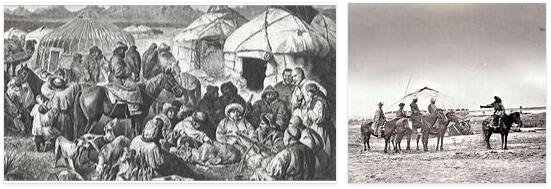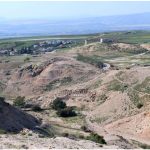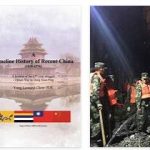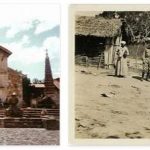HISTORY: BEFORE INDEPENDENCE
In the fifteenth century. Kyrgyz nomadic shepherds, coming from the territories north of present-day Mongolia, began to occupy both sides of the Tian Shan range (current border between China, Kyrgyzstan and Kazakhstan). From the beginning of the 1700s, severely attacked by the Mongols, many of these nomadic groups concentrated on the territory of today’s Kyrgyzstan. In the mid-19th century the Khan of Kokand (Uzbekistan) subdued the Kyrgyz people, contributed to the spread of Islam and founded the city of Bishkek. After several years of struggles between Khan supporters and the Russians, Kyrgyzstan was annexed to the Russian Empire in 1875. However, this annexation created strong social tensions over the issue of land ownership concessions. L’ both political and social friction between the Russians and the Kyrgyz people continued for years until it sparked a revolt for the imposition of compulsory military service (1916). After the October Revolution, many Kyrgyz people took refuge in China and more precisely in Xinjiang. L’ USSR granted Kyrgyzstan the status of autonomous republic (1926) and began the process of collectivization of land and industrial production that clashed with the nomadic lifestyle of the Kyrgyz.
HISTORY: FROM INDEPENDENCE TO TODAY
In 1990, violent clashes broke out in the Fergana valley, divided in the 1930s between the autonomous republics of Uzbekistan, Tajikistan and Kyrgyzstan, forcing the USSR government to send thousands of soldiers. With the dissolution of the Soviet Union, tensions did not diminish and independence was proclaimed on August 31, 1991, in conjunction with the dramatic tug-of-war in Moscow between conservative coup leaders and innovators. Also due to its condition of extreme economic backwardness and aware of the uncertainties of the future, the new state was among the promoters of the constitution of the CIS and at the beginning of 1992 he became a full member of the international community. The transition phase was ensured by President Askar Akayev, already in office since 1990 and confirmed by direct suffrage in October 1991, which guided the country towards a closer relationship with the Muslim community by joining (December 1992) the Organization of Islamic Conference, while establishing a broad military agreement with Russia and tried to initiate a plan of internal liberalization. This developed a political dialectic with the conservatives opposed to the reforms and the expense of Prime Minister Tursunbek Chyngyshev, accused of having favored an illegal outflow of gold from the country (December 1993) and forced to resign. Parliament’s hostility to the liberalization program convinced Akayev to go directly to the electorate who approved the president’s work in a referendum (January 1994).
The reform project, on the other hand, had its strong point in the contextual agreement signed with Kazakhstan and Uzbekistan for the economic unification of the three countries. But the conservatism of the majority of deputies continued to constitute a serious obstacle to the liberalization plan and Akayev took advantage of this to launch a new constitutional reform referendum with which, in addition to strengthening his powers, he obtained the transformation of the parliament from a single chamber to a bicameral (October 1994). Now safe from any unpredictable outcome, Akayev fixed the first free legislative elections (February 1995). According to aceinland, the political framework that emerged from the ballot was extremely fragmented, but the deputies were no longer able to effectively oppose the will of the president, who in December 1995 was confirmed in office by over 70% of the votes. Through another referendum (February 1996) with even plebiscitary results, Akayev further strengthened his powers to the detriment of a parliament on which Damocles’ sword of dissolution would hang if he opposed the rejection of the prime minister designated by the president three times. In 2001, the United States obtained permission to open a military base in Manas. In February 2005 the elections saw Akayev win again, but following the outbreak of a popular uprising (tulip revolution) in the Supreme Court the elections were canceled and President Akayev took refuge in Russia. Parliament appointed president and prime minister In February 2005 the elections saw Akayev win again, but following the outbreak of a popular uprising (tulip revolution) in the Supreme Court the elections were canceled and President Akayev took refuge in Russia. Parliament appointed president and prime minister In February 2005 the elections saw Akayev win again, but following the outbreak of a popular uprising (tulip revolution) in the Supreme Court the elections were canceled and President Akayev took refuge in Russia. Parliament appointed president and prime minister ad interim opposition leader Kurmanbek Bakiyev, who won the presidential elections in July. Following the street protests in 2006, the president signed a new constitution, which gave more powers to the parliament; in April 2007 there were clashes between police and demonstrators demanding further reforms and early presidential elections, while in December the legislative elections were held, won by the party linked to the president (Ak Zhol) which won the majority of seats in parliament. In 2009 Bakiyev was re-elected president with 78% of the votes, but the international control bodies denounced irregularities. In the spring of 2010, a popular uprising against the government forced Bakiyev and the government to resign. Power was assumed by a provisional government headed by opposition leader Roza Otunbaeva, while the president left the country. In June in the country and especially in the city of Oš violent clashes broke out between the Uzbek minority and the Kyrgyz majority, resulting in a hundred deaths and the flight of thousands of people to the Uzbek border. In July, Otunbaeva formed a transitional government pending new elections, which took place in October. By guaranteeing the parties freedom and pluralism (29 lists submitted) and obtaining 57% of turnout, these consultations saw the victory of five parties that exceeded the 5% threshold; the most voted was Ata-Zhurt (Patria), a nationalist party, linked to former president Bakiyev. In October 2011, the pro-Russian Almazbek Atambayev won the presidential elections.








